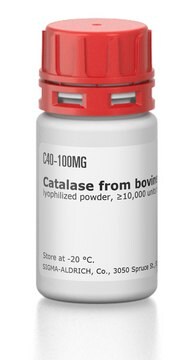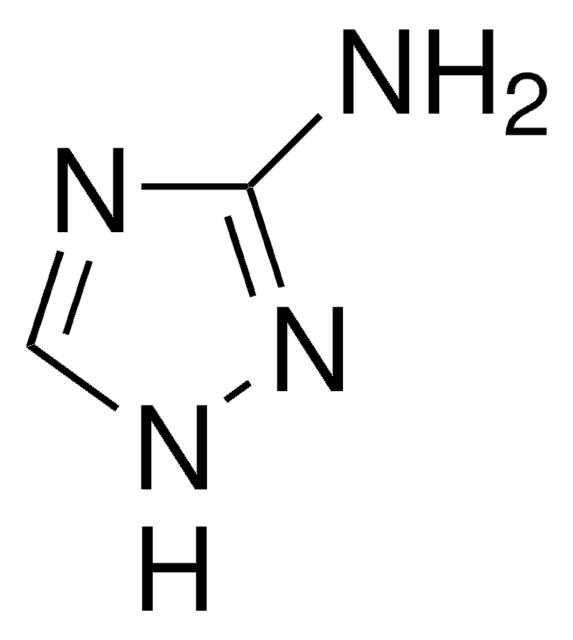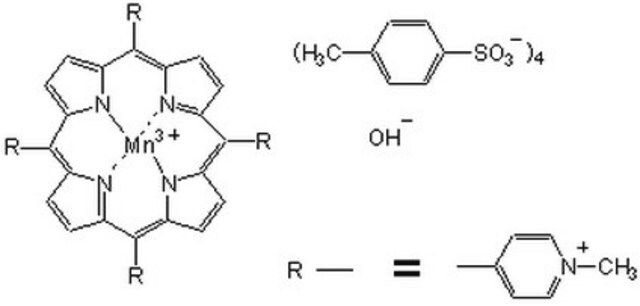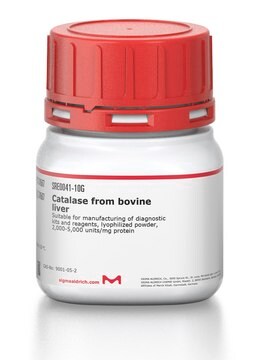C4963
Catalase−polyethylene glycol
lyophilized powder, ~40,000 units/mg protein
Sinonimo/i:
PEG-Catalase
About This Item
Prodotti consigliati
Forma fisica
lyophilized powder
Livello qualitativo
Attività specifica
~40,000 units/mg protein
PM
PEG 5,000
Composizione
Protein, ~50% E405
Grado di funzionalizzazione
~40 mol PEG per mol protein
Gruppi immobilizzati alla matrice
secondary amine linkage.
Temperatura di conservazione
−20°C
Cerchi prodotti simili? Visita Guida al confronto tra prodotti
Applicazioni
Azioni biochim/fisiol
Confezionamento
Altre note
Stato fisico
Codice della classe di stoccaggio
11 - Combustible Solids
Classe di pericolosità dell'acqua (WGK)
WGK 3
Punto d’infiammabilità (°F)
Not applicable
Punto d’infiammabilità (°C)
Not applicable
Dispositivi di protezione individuale
Eyeshields, Gloves, type N95 (US)
Certificati d'analisi (COA)
Cerca il Certificati d'analisi (COA) digitando il numero di lotto/batch corrispondente. I numeri di lotto o di batch sono stampati sull'etichetta dei prodotti dopo la parola ‘Lotto’ o ‘Batch’.
Possiedi già questo prodotto?
I documenti relativi ai prodotti acquistati recentemente sono disponibili nell’Archivio dei documenti.
I clienti hanno visto anche
Il team dei nostri ricercatori vanta grande esperienza in tutte le aree della ricerca quali Life Science, scienza dei materiali, sintesi chimica, cromatografia, discipline analitiche, ecc..
Contatta l'Assistenza Tecnica.










